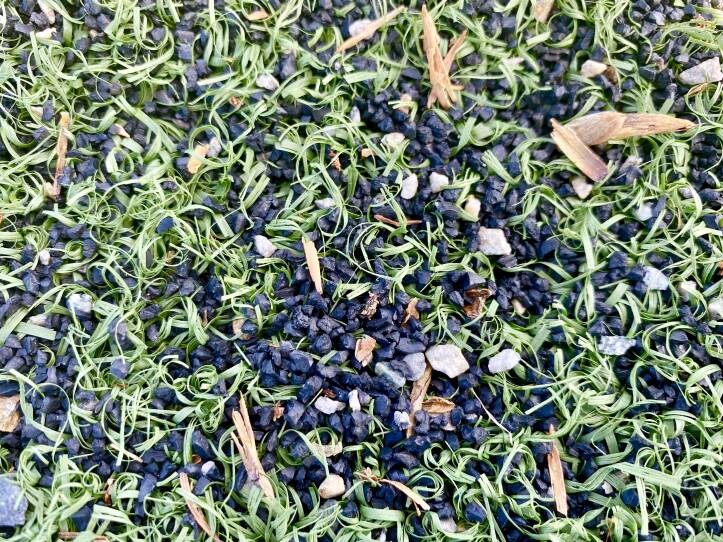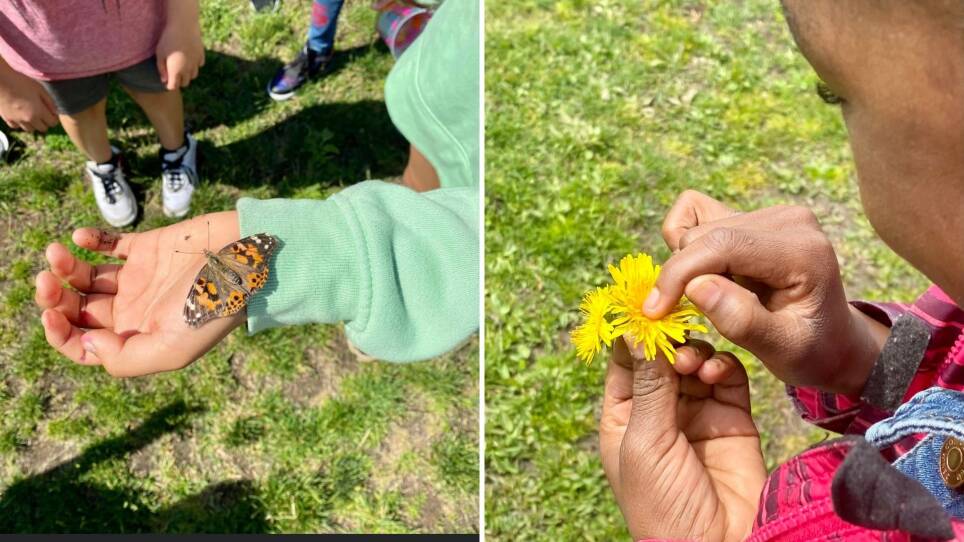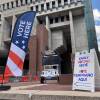Next to the Salemwood School in Malden at the end of a recent school day, the sound of children's joyful shouting filled the air at Roosevelt Park with backpacks strewn along the edge of the large grass field. The ground is scattered with dandelions and patches of dried mud.
But plans to replace the tattered field this fall with artificial turf — once seen as a panacea for playing fields ravaged by weather — have sparked neighborhood resistance.
“Unfortunately, organized sports wants these turf fields, and the neighborhood and the school wants to keep their green space,” said Kathy Sullivan, a fifth grade Salemwood science teacher and a co-founder of the group Friends of Roosevelt Park, which opposes the turf field.
The park is in such poor condition that no soccer or football have been played there since 2019, according to Deborah Burke, the city official in charge of the project. She said turf would provide "sorely needed space" for athletic programs and dramatically increase the number of children who can participate in team sports.
But neighbors are seeking alternatives. They say grass is the safest option, pointing to a growing body of research on the health and environmental hazard of materials used in plastic turf.
Communities debate the future of fields
Artificial turf is big business. There are about 16,000 synthetic turf fields in North America, with as many as 1,500 installed annually, according to the Synthetic Turf Council.
In the past, decisions to install turf did not garner much public debate, according to researcher Lindsay Pollard at UMass Lowell’s Toxic Use Reduction Institute, which studies playing field materials. But since June 2018, the institute has received queries from 23 towns in Massachusetts and many others from around the United States concerned about the health and environmental impacts of artificial turf.
“If we are concerned about hazards and a particular material — even if it is a very minute amount of chemical that’s present in that material — we’re talking about an entire football field that’s covered in it," Pollard said.

Artificial turf fields consist of multiple layers: plastic grass blades; the backing that holds turf together; and infill, which is material sprinkled among the blades to weigh it down. The plastic blades and backing have been shown to contain PFAS — so-called "forever chemicals" because they don't break down, leach into waterways and have been linked to cancer. Infill is usually made of tiny rubber pellets from recycled tires, which have also been shown to contain hazardous chemicals.
The plastic surface also traps more heat than grass and may contribute to athletes overheating during play. By some estimates, artificual turf can reach 180 degrees on hot, sunny days. Artificial turf also contributes to microplastic pollution, Pollard said.
“So on rainy days or on stormy days, or when the field is cleared of snow, the infill and the grass blades can release [microplastics] into the environment and become a problem,” said Pollard.
In Hull, where the town replaced an old grass field at the high school with a turf field in 2019, activists are now documenting the migration of plastic grass blades into adjacent Boston Harbor. And Martha’s Vineyard’s planning board last week voted down a proposed artificial turf field for the island’s high school over concerns the turf would contaminate the island’s water supply with PFAS — so-called "forever chemicals." Several municipalities have gone further: Sharon, Wayland and Concord have all issued moratoriums on any new turf fields.
Communities also grapple with what to do with old turf, which breaks down after eight to ten years. Much of that material ends up in landfills, according to researchers.
“There are claims that it can be recycled. We just haven't been able to find a really reliable pathway for that,” said Pollard. “We've found many cases where old turf is being dumped sometimes in the woods or they're being dumped on leased land and just kind of sitting there waiting.”
A 2017 reportby the industry group the Synthetic Turf Council estimated that at least 750 turf fields are removed annually in the United States.
Malden has several turf fields not far from Roosevelt Park, including the 15-year-old Maplewood Park turf field. Burke said the city has no plans yet to replace its artificial turf fields, and said any disposal of the proposed field for Roosevelt Park would be the responsibility of the contractor.
Grass field advocates like Rebekah Thomson, a co-founder of the Field Fund, say grass can be a feasible alternative solution. She pointed to fields in Springfield and Marblehead that use organically managed grass without chemical fertilizers and pesticides.
Going organic often requires paying a consultant to start off, Pollard said, but “as soil and grass health improves, you spend less and less money and less and less time needing to take care of it.”
Grass supporters feel ignored, while turf supporters feel attacked
Science teacher Kathy Sullivan said having a grass field at Roosevelt Park serves as an outdoor classroom. This spring, her students opened up dandelions to learn about seeds.
“They’re losing greenspace in a very congested urban environment. The place where these kids get to run for 20 minutes a day before school, after school, and many of them go home to apartments,” said Sullivan.

Ryan O’Malley, a Malden city councilor who objected to the turf plan, said the city should be focused on a truly sustainable field.
“Our climate is in a freefall,” O’Malley said. “There’s something particularly poignant about replacing a grass field with a field made of plastic.”
He said the majority of neighborhood residents do not support the project. Area residents say the city has ignored their concerns. Parent Lilia Hadouche said other parents, many of whom don’t speak English, feel that they have been left out of the process.
“They don’t talk the language. They don’t know who to reach to, even me,” said Hadouche, a parent of two elementary students who attend Salemwood. "I’m an immigrant too. I’m trying hard to fight for my kids and other kids.”
Burke, the city official in charge of the project, said they held public meetings and conducted outreach in multiple languages. She also said Malden reshaped the design of the park renovation in response to public comment. The city now plans to incorporate organic infill in between the plastic grass blades.
Supporters of the turf field in Malden, including officials with Malden Youth Soccer, declined to go on the record, citing verbal “personal attacks.”
Turf fields have been a heated issue in other communities. In Martha’s Vineyard, where the debate over a turf field went on for seven years, there were allegations of threats, including shell casings left in a former health agent’s briefcase and the slashing of a turf opponent’s tires.
“It’s gotten pretty ugly here on the Vineyard,” said Thomson. ”It’s a really unfortunate, ugly aspect of this debate.”
In Malden, officials are moving forward with the turf field. Opponents still hope to find a way to stop it.
The audio version of this story was produced with assistance from the Public Media Journalists Association Editor Corps funded by the Corporation for Public Broadcasting, a private corporation funded by the American people.








